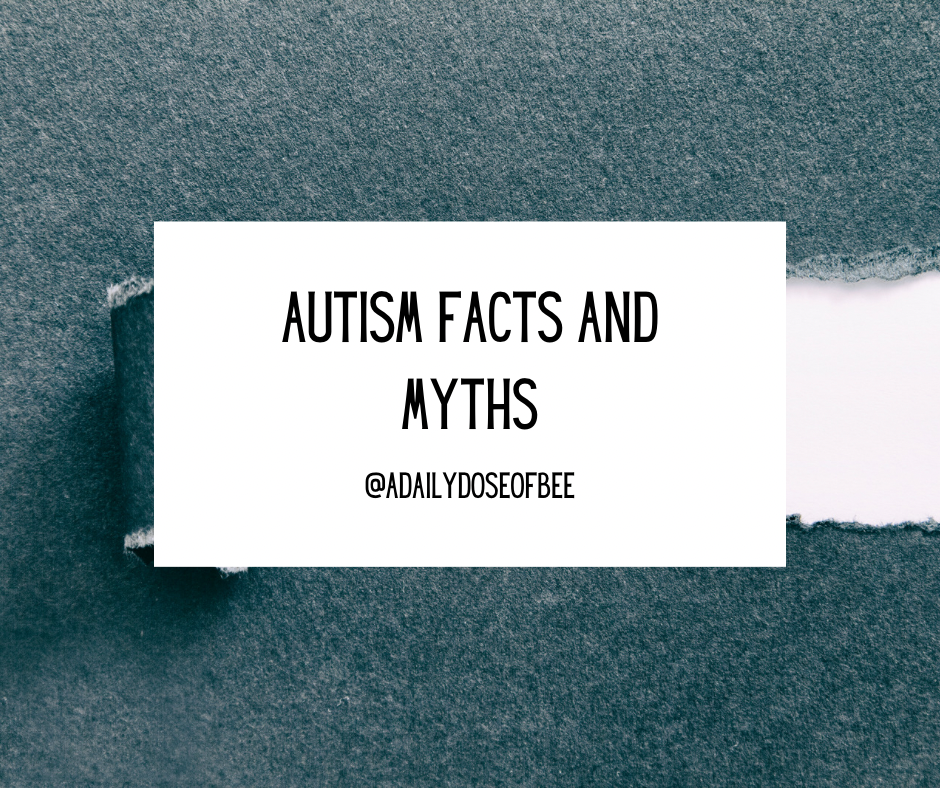It’s no secret that I was diagnosed with Autism at a young age, but it wasn’t until I turned sixteen that I found out I had Aspergers Spectrum Disorder or Autism. There are many facts and myths surrounding autism, and I hope to educate you on them through this post. By reading this, you can gain a better understanding of autism.

MYTH: Everyone with autism is either non-verbal or a savant.
Fact: ASD is a neurodevelopmental disorder that exists on a spectrum, ranging from mild to severe. According to the Diagnostic and Statistical Manual of Mental Disorders, ASD is defined by two main features: 1) deficits in social communication and interaction across various settings, and 2) restricted and repetitive behaviors, interests, or activities (American Psychiatric Association, 2013). These symptoms can differ significantly in terms of severity, impact on daily living, and effects on academic performance. For example, language deficits can range from difficulties in social communication to poor comprehension or a complete lack of speech. While some adults with ASD can live independently, others may require substantial support. The ASD diagnosis encompasses a wide range of functioning and replaces previous diagnoses such as Asperger’s disorder, childhood disintegrative disorder, and pervasive developmental disorder. It’s crucial to understand that individuals with ASD possess a diverse set of strengths and needs, and the media’s portrayal of extreme cases like “Rain Man” doesn’t represent the entire spectrum (Autistic Self Advocacy Network, 2017). Therefore, it’s important for educators to provide students with personalized interventions based on their unique set of needs instead of relying solely on their diagnosis.
MYTH: People with autism are best suited for jobs that entail repetitive tasks.
Fact: Due to the spectrum nature of autism, it’s challenging to determine a specific job that’s suitable for all individuals with ASD. While many adults with ASD may enjoy repetitive tasks, it’s incorrect to assume that a job is a good match solely based on their disability label. Individuals with ASD have a diverse range of strengths, talents, and skills that would be beneficial to employers. However, the unemployment rate for adults with ASD is estimated to be between 50% and 75%, and those who do have jobs are often underemployed (Hendricks, 2010). This is partly due to the fact that individuals with ASD frequently lack the social skills necessary to succeed during job interviews and in the workplace. To address this issue, organizations such as Specialisterne are dedicated to assisting individuals with ASD in finding and retaining employment. They pair employees with ASD with a coach who helps them navigate social situations encountered in the workplace (Cook, 2012). In the end, it’s crucial to consider the strengths, needs, interests, and preferences of the individual pursuing employment.
MYTH: People with autism cannot form relationships.
Fact: Although social interaction is impaired in people with ASD, it does not preclude them from forming meaningful relationships with others. Individuals with ASD are capable of having fulfilling relationships with family, friends, spouses, and children. In contrast to the previous belief that people with ASD prefer social isolation, recent studies have demonstrated that the majority of individuals with ASD desire social relationships (Brownlow, Rosqvist, & O’Dell, 2015). This finding is supported by personal accounts from individuals on the spectrum. Despite their desire, individuals with ASD may still struggle to navigate social relationships and understand social cues. Social media and other forms of online networking can be helpful for those with ASD to form and maintain relationships with others, both on and off the spectrum. Additionally, it is crucial for people without ASD to empathize with the perspective of their friends on the spectrum. Individuals with ASD may be straightforward and may not sugarcoat their thoughts in a way that is expected in typical social situations, which can inadvertently offend others. As long as individuals without ASD are sensitive to these differences, genuine and enduring social relationships can develop between individuals with and without ASD.
MYTH: Vaccines cause autism.
Although the cause of ASD is unknown, there is no scientific evidence to support a link between vaccines and ASD (American Academy of Pediatrics, 2017). While thimerosal, a vaccine ingredient, was once thought to be the cause of ASD, studies have shown that the removal of thimerosal from vaccines has not decreased the prevalence of ASD, but rather the opposite (Center for Disease Control and Prevention, 2015). The American Academy of Pediatrics has compiled a list of research studies demonstrating that there is no connection between vaccines and ASD. However, there are environmental and genetic factors that increase the risk of developing ASD. Currently, 61 genetic variations have been associated with a higher risk of ASD, and chromosomal abnormalities and repeated or deleted DNA segments have also been implicated (Autism Speaks, 2017). Environmental risk factors include maternal prenatal medication use, poor maternal physical and mental health, advanced paternal age, maternal exposure to chemicals, preterm birth, complications during birth, low birth weight, jaundice, and post-birth infections (Karimi, Kamali, Mousavi, & Karahmadi, 2016). Mumps, measles, and rubella are some of the infections associated with a higher risk of ASD, so the MMR vaccine can help reduce the likelihood of developing ASD from these infections. Even though teachers are not qualified to provide medical advice, they should be informed about this topic since parents may ask them about the connection between vaccines and ASD. Teachers can refer parents to reputable resources with evidence-based information.
You can read more on my Autism Posts here!
Love, Bee xxx
